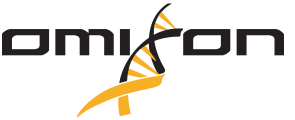I recently ran into an email on one of the numerous mailing lists I’m subscribed to. The email was written by a student who was desperately looking for NGS data for testing a pipeline. This letter made me realise that finding short read data is probably not an easy task for people who are just starting to use next generation sequencing techniques. If you know the right search phrases, you can easily find the short read databases, but if you’re googling “NGS data” you’ll get basically no relevant hits. So here is a collection of NGS data resources to make the life of the newbies a little easier.
Year: 2013
Flashcard Fridays – Part 1. Comparison of next generation sequencing technologies
Recommended articles:
Article 1. A tale of three next generation sequencing platforms: comparison of Ion Torrent, Pacific Biosciences and Illumina MiSeq sequencers – Quail et al. 2012
This is an incredibly useful review about IonTorrent, Illumina and PacBio technologies. The paper was published in 2012, and contains valuable information about error rates, throughput. The article contains some information about pricing, which is kind of hard to come by, especially if you”re interested in more than one sequencing technologies.
Workflow Wednesdays – Part 1. Introduction, datasets, plans
We created an in-house training material for new employees a while ago, which contained a single page, very short workflow for bioinformatics analysis tasks we usually do. I thought it would be a great idea, to go through this workflow step-by-step, collect some tools that can be used for each task and show some examples using data from all main sequencing platforms. Note, that we mostly do sequence based alignments, so de novo assemblies will only be briefly mentioned.
I will use open access data sets, so you can reproduce each step if you want to. Strain K12 substrain MG1655 of E. coli was selected as an example, because I could find Illumina, 454 and Ion Torrent reads for this substrain. I know, that there are a few very useful blog posts around (e.g. here and here), using the same (or very similar) datasets. Unlike the previously mentioned blog posts, comparison of different sequencing platforms is not an objective of these posts.
Omixon and Knome partner to offer advanced HLA typing for whole genome!
We have great news today as Omixon Biocomputing and Knome has become partners to offer advanced HLA typing for whole genome and exome level data. We believe that this partnership will help us “discover safer and more efficient therapies by identifying genomic biomarkers for drug response and adverse response,” as our CEO, Attila Berces, described.
Bioinformatics for Beginners – Biggest players on the NGS field
In the last few years, announcements about revolutionary new sequencing technologies have been popping up like daisies. All of them promised to solve at least some of the problems we have with existing NGS technologies. Some of these new techniques became popular, but several of them either never became commercially available or never gained popularity. To tell you the truth, a sequencer that is not used by a lot of people is very much like a sequencer that doesn’t exist at all.* So here is a list of sequencing platforms that definitely exist: the three biggest players of the NGS field and some honorable mentions.
